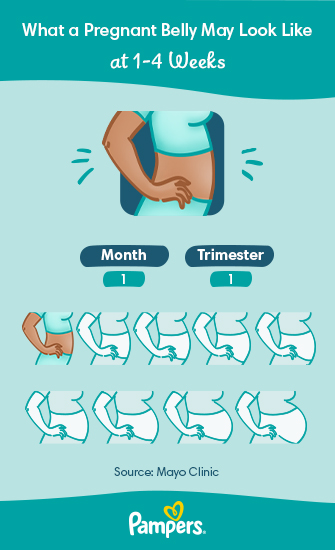
Week by Week Pregnancy and Signs
Pregnancy is a beautiful and transformative journey that spans approximately 40 weeks. During this time, the mother’s body undergoes remarkable changes to accommodate the growing fetus. Each week brings new developments and signs that indicate the progress of the pregnancy.
Week 1-4: Conception and Implantation
- Conception: Pregnancy begins with the fertilization of an egg by a sperm, typically occurring in the fallopian tubes.
- Implantation: The fertilized egg travels down the fallopian tube and implants into the lining of the uterus, usually around 6-12 days after fertilization.
- Signs: No noticeable signs, as the pregnancy is still in its early stages.
Week 5-8: Embryonic Development
- Embryonic development: The fertilized egg begins to develop into an embryo, with the formation of the neural tube, heart, and other organs.
- Signs: Some women may experience light spotting or implantation bleeding, which can be mistaken for a period. Fatigue and breast tenderness may also occur.
Week 9-12: Fetal Development
- Fetal development: The embryo transforms into a fetus, with the formation of limbs, fingers, and toes. The heart is fully developed and begins to beat regularly.
- Signs: Morning sickness and fatigue are common symptoms. The breasts continue to enlarge and become more tender.
Week 13-16: Rapid Growth
- Rapid growth: The fetus grows rapidly, with the development of the eyes, ears, and nose. The limbs become more defined, and the fetus begins to move.
- Signs: The uterus expands, causing the abdomen to bulge slightly. The mother may experience increased urination and constipation.
Week 17-20: Movement and Gender
- Movement: The mother may begin to feel the fetus’s movements, known as quickening.
- Gender: In some cases, the gender of the fetus can be determined through an ultrasound.
- Signs: The uterus continues to grow, and the mother’s weight increases. Braxton Hicks contractions, which are practice contractions, may occur.
Week 21-24: Increased Activity
- Increased activity: The fetus becomes more active, with increased kicking and movement.
- Signs: The mother’s belly becomes more prominent, and the skin may stretch, causing stretch marks. The mother may experience back pain and leg cramps.
Week 25-28: Weight Gain and Development
- Weight gain: The mother typically gains around 1-2 pounds per week.
- Development: The fetus’s lungs and respiratory system continue to develop, and the brain undergoes significant growth.
- Signs: The mother’s appetite increases, and she may experience heartburn and indigestion.
Week 29-32: Third Trimester
- Third trimester: The final stage of pregnancy begins, with the fetus continuing to grow and mature.
- Signs: The mother’s body prepares for labor, with increased cervical dilation and softening. The breasts may begin to produce colostrum, a precursor to breast milk.
Week 33-36: Final Preparations
- Final preparations: The fetus gains weight and develops further, with the lungs becoming fully mature.
- Signs: The mother’s abdomen is at its largest, and she may experience difficulty sleeping and breathing. The fetus may descend into the pelvis, causing increased pressure on the bladder.
Week 37-40: Labor and Delivery
- Labor: The cervix dilates and the uterus contracts, leading to labor and delivery.
- Delivery: The baby is born, marking the culmination of the pregnancy journey.
- Signs: Contractions become stronger and more frequent, accompanied by a bloody show. The mother may experience a strong urge to push.
Additional Signs and Symptoms of Pregnancy
In addition to the week-by-week developments, there are several general signs and symptoms that may occur during pregnancy:
- Missed period: One of the earliest signs of pregnancy is a missed menstrual period.
- Nausea and vomiting (morning sickness): This common symptom typically occurs during the first trimester.
- Fatigue: Pregnancy can cause extreme fatigue, especially in the first and third trimesters.
- Breast changes: The breasts may become enlarged, tender, and darker in color.
- Frequent urination: The growing uterus puts pressure on the bladder, leading to increased urination.
- Constipation: Pregnancy hormones can slow down digestion, causing constipation.
- Mood swings: Hormonal changes can affect mood, leading to mood swings and irritability.
- Skin changes: Pregnancy can cause skin darkening, acne, and stretch marks.
- Leg cramps: Leg cramps are a common symptom, especially in the third trimester.
It’s important to note that not all women experience the same signs and symptoms of pregnancy. Some may have more severe symptoms than others, while some may experience very few. If you are concerned about any symptoms or have any questions, it’s always best to consult with your healthcare provider.